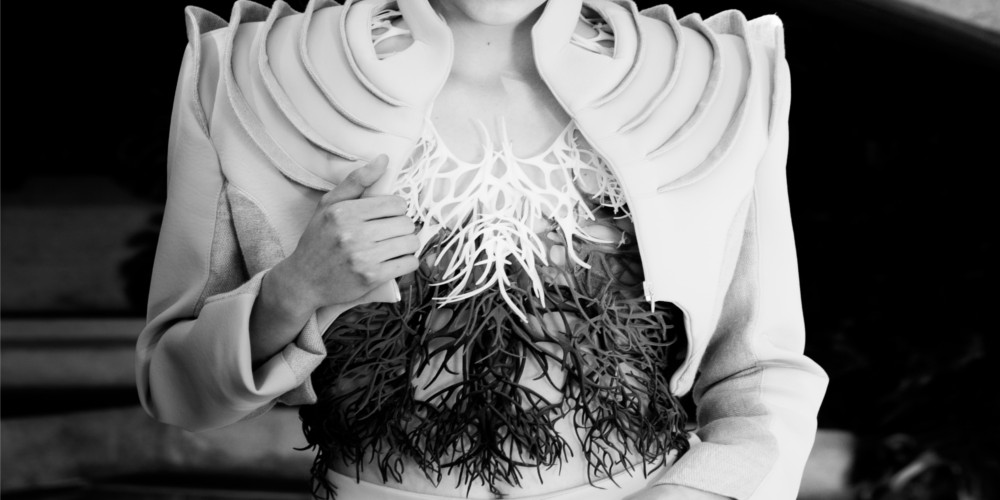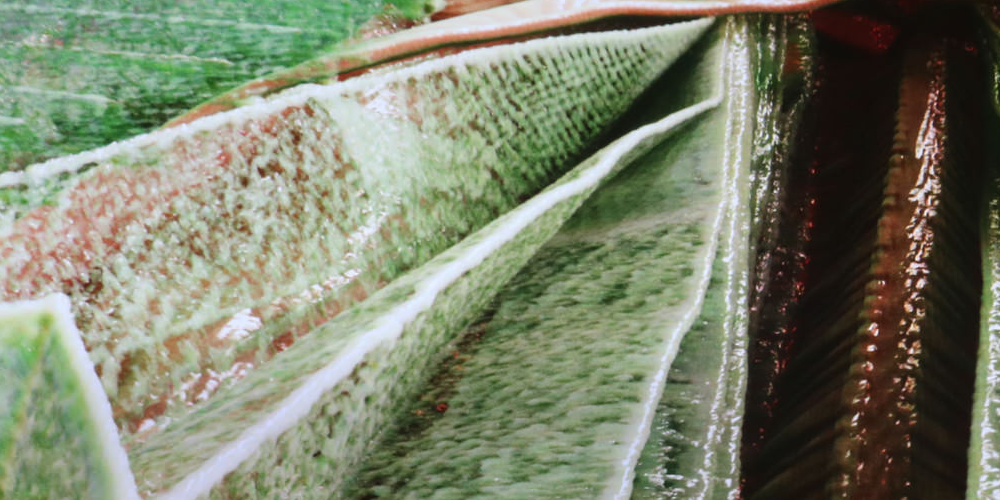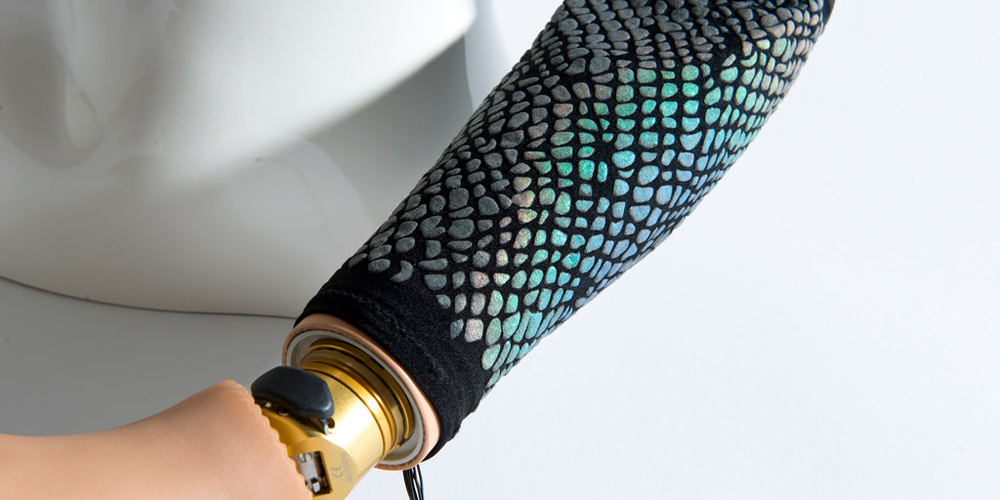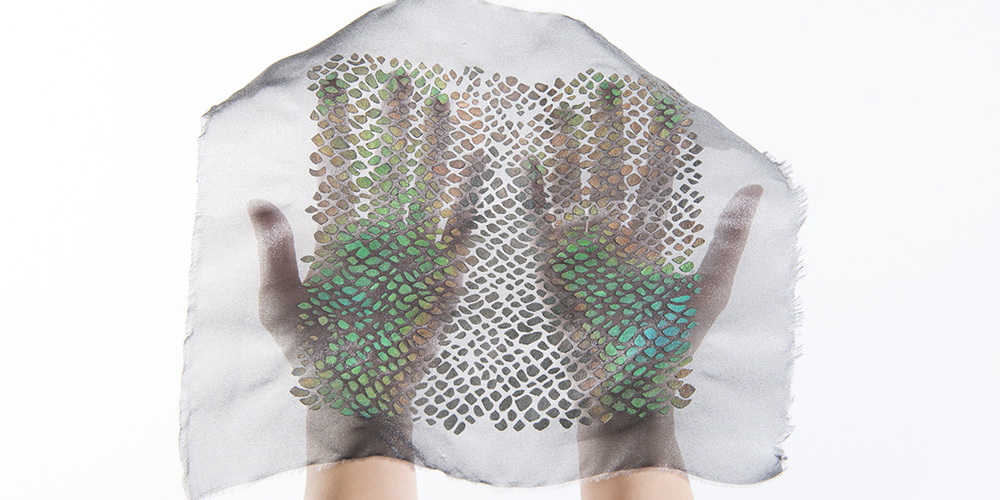
Nature’s patterns, structures, and functions are an endless source of inspiration. We started off the project by examining our body’s design that may be applied to artificial bodies. Through workshops and interviews with experts from Ottobock, we expand our agenda: the language of sensation, interaction, and the aesthetics of artificial bodies. The outcome illustrates our design exploration and possible future of technology and body.
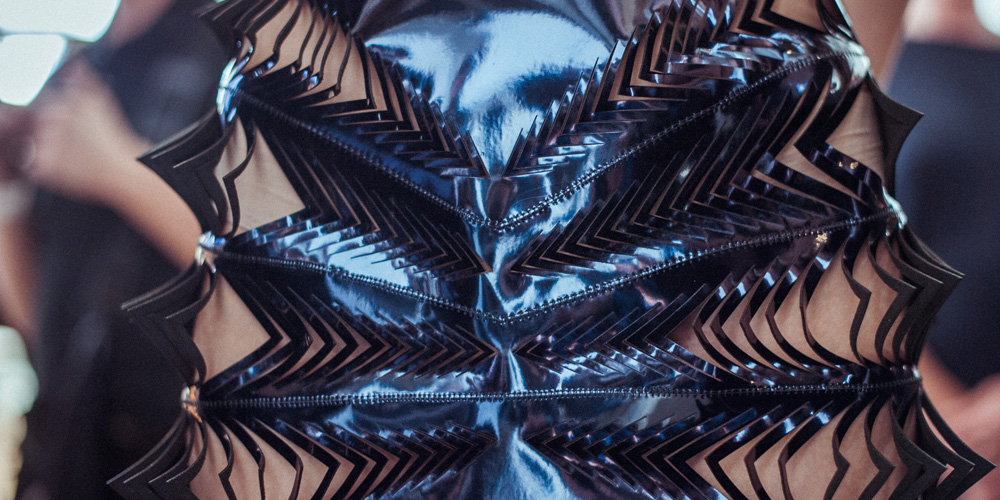
Iris van Herpen explores the interplay of magnetic forces. By thoroughly examining the representation of dynamic forces of attraction and repulsion, the designer fuses nature and technology. Van Herpen worked with techniques like injection molding and laser cutting on maze like structures, 3D printing and intricate architectural handwork on dresses, jackets, trousers, skirts, and blouses, giving them dynamic shapes and surfaces that echo the body’s movement.
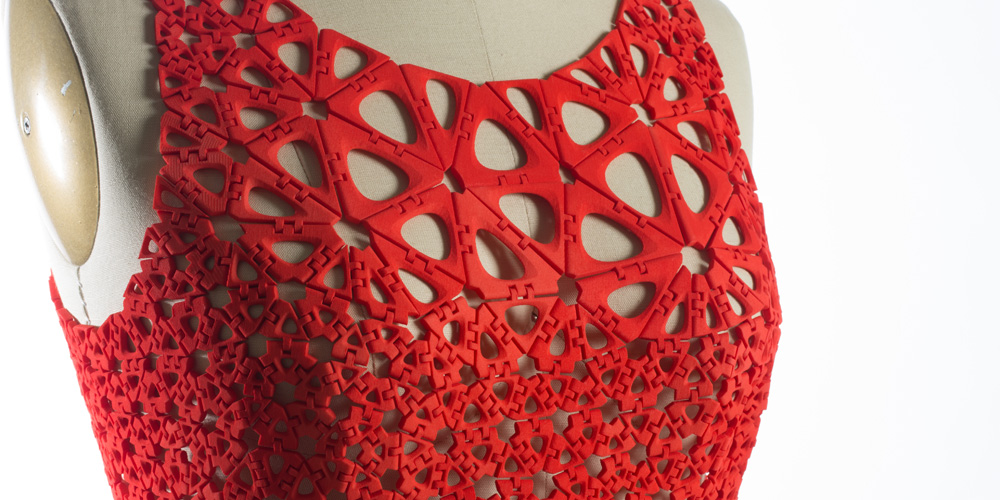
Kinematics Dress represents a new approach to manufacturing that tightly integrates design, simulation, and digital fabrication to create complex, customized products. Composed of thousands of unique interlocking components, each dress is 3D printed as a single folded piece and requires no assembly.
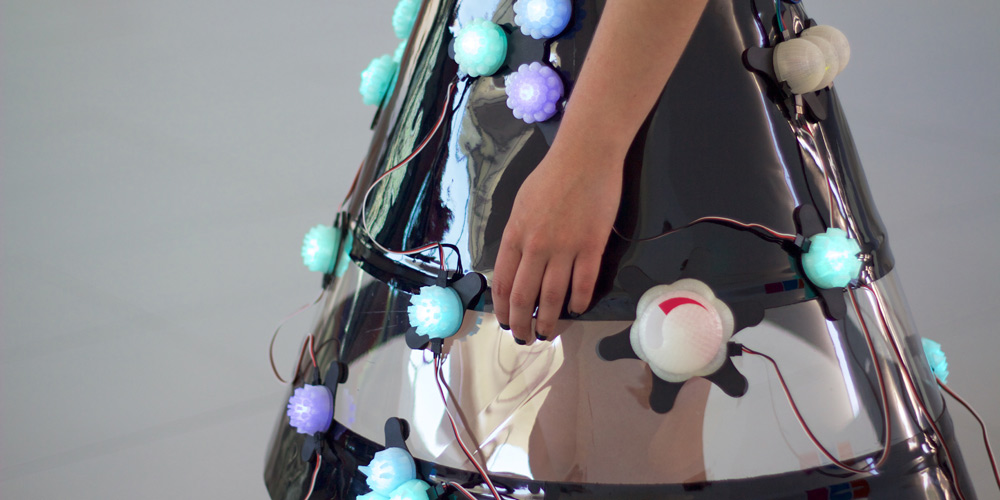
Environment Dress 2.0 is a smart dress that measures the aggressiveness of the environment to analyze how it affects people’s mood and behavior.
It is a wearable equipped with sensors that analyze issues such as variations in noise, temperature, atmospheric pressure, ultraviolet radiation, or the amount of carbon monoxide present in our daily lives. All of this geo-located information is connected to the user’s mood via an app.

